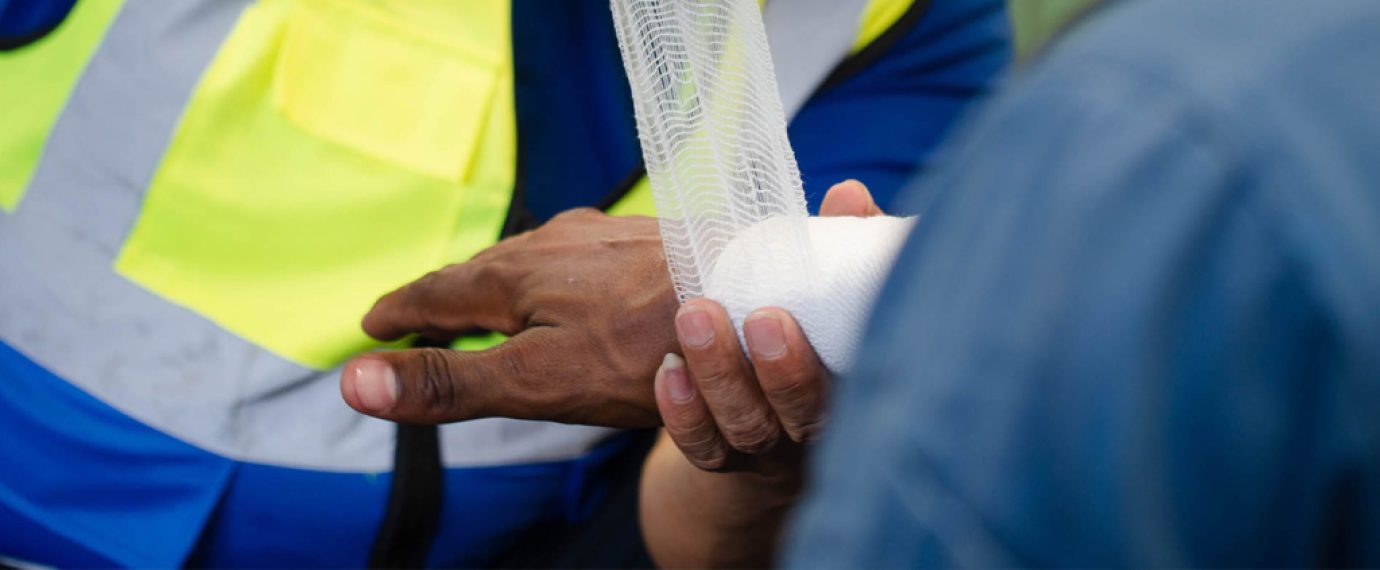By Kody Kamm, MS, CSP – Manager – Health & Safety, and Matthew McCarthy, ASP – Supervisor – Health & Safety, U.S. Compliance
Regardless of your title, department, job description, or tenure with a company, work-related injuries and exposure to bloodborne pathogens are hazards that employers and employees alike must be ready for. There are certain steps you, as the employer, can take to mitigate the risk of exposure for your employees. Bloodborne pathogens are pathogenic microorganisms found in human blood and other potentially infectious materials (OPIM). Common bloodborne pathogens include:
- HIV – Human Immunodeficiency Virus
- Hepatitis B Virus
- Hepatitis C Virus
These viruses are transmitted through blood-to-blood or blood-to-mucous membrane (either direct or indirect) contact.
What the Regulatory Standard Requires
OSHA Standard 29 CFR 1910.1030 requires that employers protect their employees from exposure to bloodborne pathogens with several components. These include a documented and annually reviewed exposure control plan, annual authorized and periodic awareness level training, and finally, hepatitis B vaccinations documented through a hepatitis B vaccination acceptance/declination form for authorized level employees. If you are in a state with a state-run occupational health and safety (OSH) plan, please review their bloodborne pathogens standard, as there may be key differences to be aware of.
Mitigating the Risk of Exposure
Below are five key steps you can take to mitigate the risk of exposure in a manufacturing setting.
- Perform medical emergency drills to practice the 8-step cleaning protocol reviewed in your Authorized Level Training.
- Ensure the facility has adequate supplies, including PPE/first aid tools like breathing barriers and clean-up supplies, relative to the number of employees with occupational exposure and relative to the number of employees in your facility. Keep in mind that the standard bloodborne pathogens exposure control kits may contain enough supplies for a few employees.
- Practice universal precautions when responding to a medical emergency, workplace incident, or when cleaning up.
- Have adequate engineering controls and hygiene stations throughout the facility to limit the potential for exposure.
- Reassess your facility for occupational exposures regularly.
Medical Emergency Drills
A key component to risk mitigation is proper training. Training gives employees the information they need to keep themselves safe in potentially unsafe situations. As such, the main element of this training is practicality. Through medical emergency drills, your employees can practice the key aspects of their training, like using universal precautions, applying the eight-step protocol for cleaning up, and other tasks like getting clean-up supplies en route to the scene of an accident.
Response and Exposure Control Kits
Whether it is running a machine, performing a quality control inspection, or delivering parts and services, employees need to have the right tools for the job. Mitigating the risk of bloodborne pathogens exposure is no different. When cleaning up contaminated items, the “tools” needed are the contents of the bloodborne pathogens exposure control kit.
Standard exposure control kits can be purchased by employers at most industrial supply stores (in person or online). You, as the employer, need to make sure that you have an adequate number of supplies. For example, if you have a 100-person facility operating on three shifts and an emergency response team of 10 people, one bloodborne pathogens exposure control kit will not give you enough supplies. As the employer, you can purchase multiple kits or assemble your own kit in larger quantities by mirroring the contents of the standardized kit.
Universal Precautions
Universal precautions are a work practice control where all human blood and other potentially infectious materials are treated as if known to be infectious. When employees with occupational exposure operate under universal precautions, they always make sure to have their PPE done, have the scene controlled, and have an authorized hazardous waste handler ready to pick up contaminated items.
Engineering Controls and Hygiene Stations
When applying controls to various hazards in the workplace, engineering controls will always give the most control over the hazard if it is unable to be eliminated or substituted for something less hazardous. As a quick reminder, engineering controls are hazard controls that isolate or remove a hazard from the workplace. From a bloodborne pathogens standpoint, these may include having a secure area to isolate contaminated materials between the clean-up stage and pick-up stage from a hazardous waste authorized handler, having sharps disposal containers, and implementing hygiene stations where employees can flush potentially exposed areas of the body. Hygiene stations consist of hand washing facilities, emergency eyewashes, and safety showers.
Re-assessment
OSHA’s 29 CFR 1910.1030(1)(iv) and 1910.1030(g)(2)(ii)(B) require that the exposure control plan and authorized level training be completed annually. Through an annual review of the exposure control plan and authorized level training, the facility can be reassessed every year to determine if there have been any changes to the way exposure to bloodborne pathogens is controlled.
For assistance with your exposure control plan, authorized level training, or any other bloodborne pathogens measures, contact your U.S. Compliance representative.



